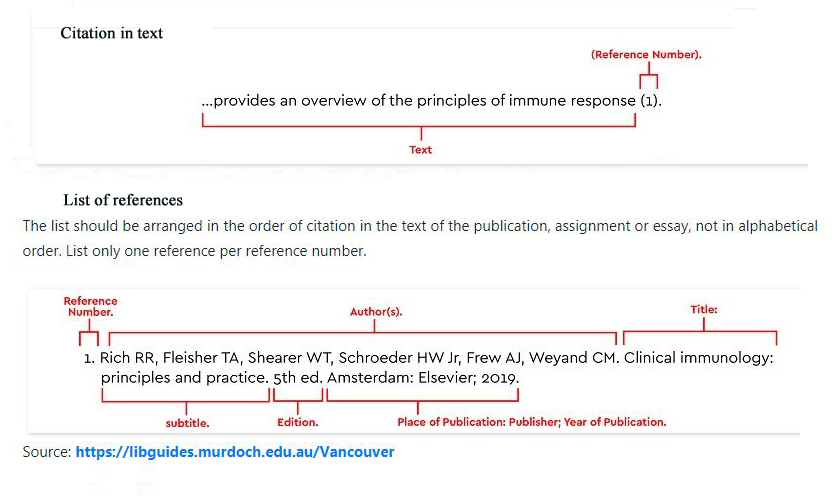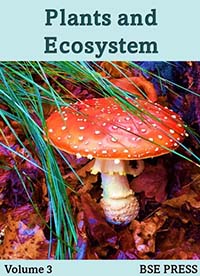Article Preparation
How to Prepare Manuscript
General Instructions
Download the Manuscript Template.doc or Manuscript Template.pdf to format your manuscript according this journal. We suggest all authors to prepare their manuscripts by themselves, but if they need any professional assistance for manuscript formatting service, we invite them to visit the professional services for manuscript formatting by the publisher. Authors are requested to use fluent English with standard writing format. Submitted manuscript may be returned to the author without review if the language is not of an acceptable standard.
However, following overall instructions authors should follow during manuscript preparation for this journal-
- Manuscript must be written in English using Microsoft Word file.
- Must mention article type above the title. See about the journal section.
- Keep the text in single column, justify paragraph and line numbering.
- Use Times New Roman font (size 12) and single line spacing.
- Check spell, grammar and sentence structure by any software
- Place all tables and figures in relevant area of the manuscripts.
- All figures and their legends should be clearly visible.
- Clearly indicate the multiplication sign ‘×’, not the letter ‘x’ where needed.
Instructions for Sections
Title
Title should be brief, concise, centered aligned and bold. This journal does not allow any non-standard abbreviations or symbol in title; for example, do not use ‘&’ symbol instead of ‘and’.
Authors name and affiliations
Authors’ full name should be mentioned following first name, middle name and last name. The names should be written just below the title and within centered align. Affiliation should be mentioned as superscript numbers to the right of author name and the number should be placed at the left of affiliation list below the names. If all authors have same affiliation, there is no need to mention any number. Corresponding author should be marked as superscript ‘*’ at the right side of the name and at the end of affiliation corresponding author’s email address should be mentioned. Affiliation list and corresponding email also will be centered align. The other information about authors must be included in Author Submission Form.doc or Author Submission Form.pdf that is mandatory to submit along with manuscripts.
Abstract
Abstracts should briefly reflect the overall study and its major findings. Abstract should not be exceeded 250 words and not less than 150 words. Short Communications as well as Review Articles should include abstract. Heading of the abstract should be bold and left align, and the texts should be justified.
Keywords
4–6 keywords, separated by semicolon (;) should be written after the abstract. We recommend authors to avoid the words copying from the title. First letter of each word must be in capital letter and at the end there is no need to use ‘and’ instead of semicolon.
Introduction
Introduction must be started immediately after the keywords as the next paragraph. Introduction should be brief but informative which lead the readers into the insight of the research. Authors should tie-up cited literature with the aims of the study stating the importance of the investigation. Authors are requested to mention up-to-date literatures as much as possible to make the findings scientifically sound. Heading of introduction should be left align with bold font.
Materials and methods
As a continuation of the writing this section must be written after the introduction. Heading of this section should be left align with bold font. All materials, model species or other important subjects that are used in this investigation have to be mentioned along with their source. All methods/procedures should be briefly described with citing references. In case of new or modified methods, there need to be stated with sufficient details. The experimental design, statistical analysis and data processing should be well defined to understand the research steps which will allow others to reproduce the results. If authors need to add any subsections under materials and methods, they can add but the subsections’ heading should be bold and sentence should be started from the end of the subheadings. For example-
Materials and Methods
Plant materials: This investigation uses…..
Results
Results section also has to be started after materials and methods. All findings of the investigation shall be described in this section. All tables and figures must have a title or legend which will be mostly relevant with the data analysis and should be self-explanatory. All data from statistical analysis and their significances should be described in this section. There is no need to describe any statistically non-significant data, but should be mentioned.
Discussion
This section will explain the results that have found in the investigation. The explanation of the results should convey how they could help to increase current understanding of the center question or questions of the investigation. Authors should cite more previous works to make more clear and logical interpretations of the results. Even discussion section should cover the possible future significance of the findings in the same research field or with other similar fields.
Note: The manuscript with ‘Results and discussion’ section instead of separate ‘Results’ as well as ‘Discussion’ also welcome. The authors should describe the results along with their interpretations logically and coherently.
Conclusion
This section is optional for our journal. If authors feel interest to set conclusion as separate part, they should use few sentences to describe the main findings or significances of the investigation. The authors should avoid the repetition of the previously mentioned sentences in conclusion section.
Authors' contributions
The journal expects clear written statement about the authors’ contribution in the study indicating the roles of each author, particularly who designed, planed, experiment and analysis the results during the study.
Acknowledgement
Acknowledgement should be given before references including all funding sources and all contribution from others.
Conflict of Interest
If the authors have any possible relations with other individuals/institutes/organizations which could influence the publications, authors must state the relations in this section. Even, they have nothing to state they should mention that they have no conflict of interest.
References Style
Reference section is the ending part of a manuscript and the journal uses the Vancouver reference style to arrange all the cited literatures/references in the manuscript. Authors can visit the site for more information https://libguides.murdoch.edu.au/Vancouver. According to this citation style, cited references within the text have to be mentioned as numbers within first bracket in numbers order that means the used reference number in text should be arranged in number consecutively. Once reference has been cited in the manuscript, the same number (the number that assigned with first use of the reference in the manuscript) will be used in all subsequent citation. The reference list should be used roman numbers at the beginning of each reference and in the same order that they were cited in the text. Follow these examples-
Article Preparation Citation Style
Citation in text-
This journal follows Vancouver referencing style (1). If authors need to know more they should visit the mentioned link (2, 3). Authors should download the manuscript template and authors submission form before submission (4-7). However, these instructions will guide them to make their manuscripts according to this journal’s style (1, 8-12). Here, 1 is for the repetition of the first citation.

List of references
Source of all given examples- https://libguides.murdoch.edu.au/Vancouver
Journal article
Author(s). Title of article. Abbreviated title of Journal. Year;vol(issue):page number(s).
- Drummond PD. Triggers of motion sickness in migraine sufferers. Headache. 2005;45(6):653-6.
- Halpern SD, Ubel PA, Caplan AL. Solid-organ transplantation in HIV-infected patients. N Engl J Med. 2002;347(7):284-7.
- Gillespie NC, Lewis RJ, Pearn JH, Bourke ATC, Holmes MJ, Bourke JB, et al. Ciguatera in Australia: occurrence, clinical features, pathophysiology and management. Med J Aust. 1986;145:584-90. (If more than six authors)
- 21st century heart solution may have a sting in the tail. BMJ. 2002;325(7537):184. (If no author)
- Diabetes Prevention Program Research Group. Hypertension, insulin, and pro-insulin in participants with impaired glucose tolerance. Hypertension. 2002;40(5):679-86. (If organization as author)
Book
Author(s). Title: subtitle. edition (if not the first). Vol. (if a multivolume work). Place of publication: Publisher; Year. page number(s) (if appropriate). (If authored work)
- Hoppert M. Microscopic techniques in biotechnology. Weinheim (Germany): Wiley-VCH; 2003.
- Lawhead JB, Baker MC. Introduction to veterinary science. Clifton Park (NY): Thomson Delmar Learning; 2005.
Editor(s) name, editors. Title of work: Subtitle. edition (if not the first). Vol. (if a multivolume work). Place of publication: Publisher; Year. p. page number(s) (if appropriate). (If edited work)
- Storey KB, editor. Functional metabolism: regulation and adaptation. Hoboken (NJ): J. Wiley & Sons; 2004.
- Gilstrap LC, Cunningham FG, Van Dorsten JP, editors. Operative obstetrics. 2nd ed. New York: McGraw-Hill; 2002.
Book chapter/part
Author(s) of chapter. Title of chapter. In: Editor(s) name, editors. Title: subtitle of book. Edition (if not the first). Place of publication: Publisher; Year. p. page numbers.
- Meltzer PS, Kallioniemi A, Trent JM. Chromosome alterations in human solid tumors. In: Vogelstein B, Kinzler KW, editors. The genetic basis of human cancer. New York: McGraw-Hill; 2002. p. 93-113. (Chapter in an edited book)
- Ford HL, Sclafani RA, Degregori J. Cell cycle regulatory cascades. In: Stein GS, Pardee AB, editors. Cell cycle and growth control: biomolecular regulation and cancer. 2nd ed. Hoboken (NJ): Wiley-Liss; 2004. p. 42-67. (Chapter in an edited book)
- Ford-Martin, P. Cognitive-behavioral therapy. In: Thackery E, Harris M, editors. Gale encyclopedia of mental disorders. Vol. 1. Detroit (MI): Gale; 2003. p. 226-8. (Article in an encyclopaedia)
- 13. Mental disorders and their treatment. In: The new encyclopaedia Britannica. Vol. 23. 5th ed. Chicago (IL): Encyclopaedia Britannica; 1987. p. 956-75. (Article in an encyclopaedia: No author)
Conference
Editor(s) name, editors. Title of conference: subtitle of conference; Year Month Date; Location. Place of publication: Name of Publisher; Year. (Conference proceedings)
- Harnden P, Joffe JK, Jones WG, editors. Germ cell tumours V: Proceedings of the 5th Germ Cell Tumour conference; 2001 Sep 13-15; Leeds, UK. New York: Springer; 2002.
Internet documents
Author(s). Document title. Webpage name [format]. Source/production information; Date of internet publication [cited year month day]. Available from: URL.
- Australian Institute of Health and Welfare. Chronic diseases and associated risk factors [Internet]. Canberra: The Institute; 2004 [updated 2005 Jun 23; cited 2005 Jun 30]. Available from: http://www.aihw.gov.au/cdarf/index.cfm.
- How to cite references [Internet]. Murdoch (WA): Murdoch University Library; 1996 [cited 2010 Sept 2]. Available from: http://wwwlib.murdoch.edu.au/find/citation/. (When no author)
Newspaper article
Article Author. Title of article. Title of Newspaper: Section. Year Abbreviated Month Date:inclusive page numbers.
- Hatch, B. Smoke lingers for those who keep hospitality flowing. Australian Financial Review. 2006 Jul 13:14. (Printed with author)
- Problems don't end with Patel. The Australian. 2010 Jul 1:15. (Printed but no author)
Thesis (Unpublished)
Author. Title of thesis: subtitle. Unpublished thesis type [format]. Location of University: University; Year.
- Hincks CL. The detection and characterisation of novel papillomaviruses. Biomedical Science, Honours [thesis]. Murdoch (WA): Murdoch University; 2001
Thesis (Published)
Author. Title of thesis: subtitle. Place of publication: Publisher; Year of publication.
- Gruszczynski L. Regulating health and environmental risks under WTO law: a critical analysis of the SPS agreement. New York: Oxford University Press; 2010.
E- book
Author(s). Title of e-book: subtitle [format]. Place: Publisher; Date of original publication [cited year abbreviated month day]. Available from: URL.
- Sommers-Flanagan J, Sommers-Flanagan R. Clinical interviewing [e-book]. 5th ed. New York: John Wiley & Sons; 2015 [cited 2015 Jun 30]. Available from: https://ebookcentral-proquest-com.libproxy.murdoch.edu.au/lib/murdoch/detail.action?docID=2056179.
These above examples are set from the following link/website. These are the small part of the examples available in that link address. Therefore, we request authors to visit the site during article preparation. The link https://libguides.murdoch.edu.au/Vancouver
Note: We request authors to attach DOI number at the end of all references in reference list.
More Instructions
Tables
Table format should be standard using MS word table, and tables should be numbered consecutively. All column heading should be in bold face and the used units (ISU) have to be placed below the headings. All tables’ title/headings should be brief, logical and clear and have to be placed above the table. If any table needs to use abbreviated forms, there mandatorily make a note immediately after table with description of the all mentioned abbreviations in the table. Tables should be placed within the manuscript or the appropriate place of the manuscript. All tables must be cited consecutively in the text of the manuscript.
Figures
All figures, scanned image or software drawing should be of good quality and their number should be consecutively. Their legends should be clear, concise and logical. Unclear, under developed and meaningless figures should not be used in manuscript. Figures should be placed within the manuscript or the appropriate place of the manuscript. All figures must be cited consecutively in the text of the manuscript.
Formulae or Equations
If authors use any formulae or equation in the manuscript, they should use the formulae or equations in proper place with left align.
Proof Correction
All accepted article will be sent to the corresponding author as pdf format in accordance with this journal style, to check any possible errors, mistakes or other anomalies before forwarding to online publication. After successful corrections the pdf file will be sent again to the corresponding author for cross check. Then after final publications, there will be no options for Proof Corrections except any major errors that could undermine the manuscripts.
Supplementary material
Supplementary material means all raw/ unprocessed files. Or any main file from where a brief is produced. We request the authors to keep safe all supplementary materials and stored in their computer. When needed, the journal can ask the authors to supply these materials.



